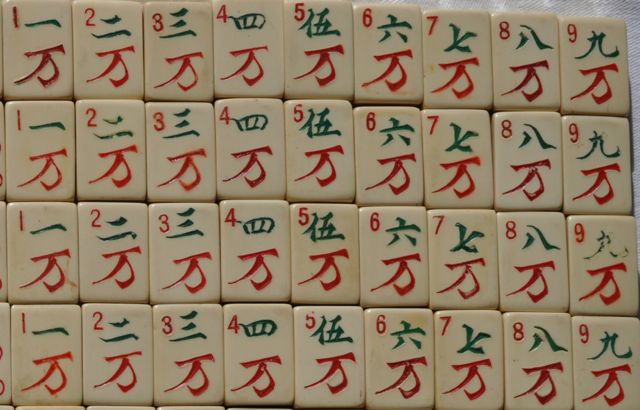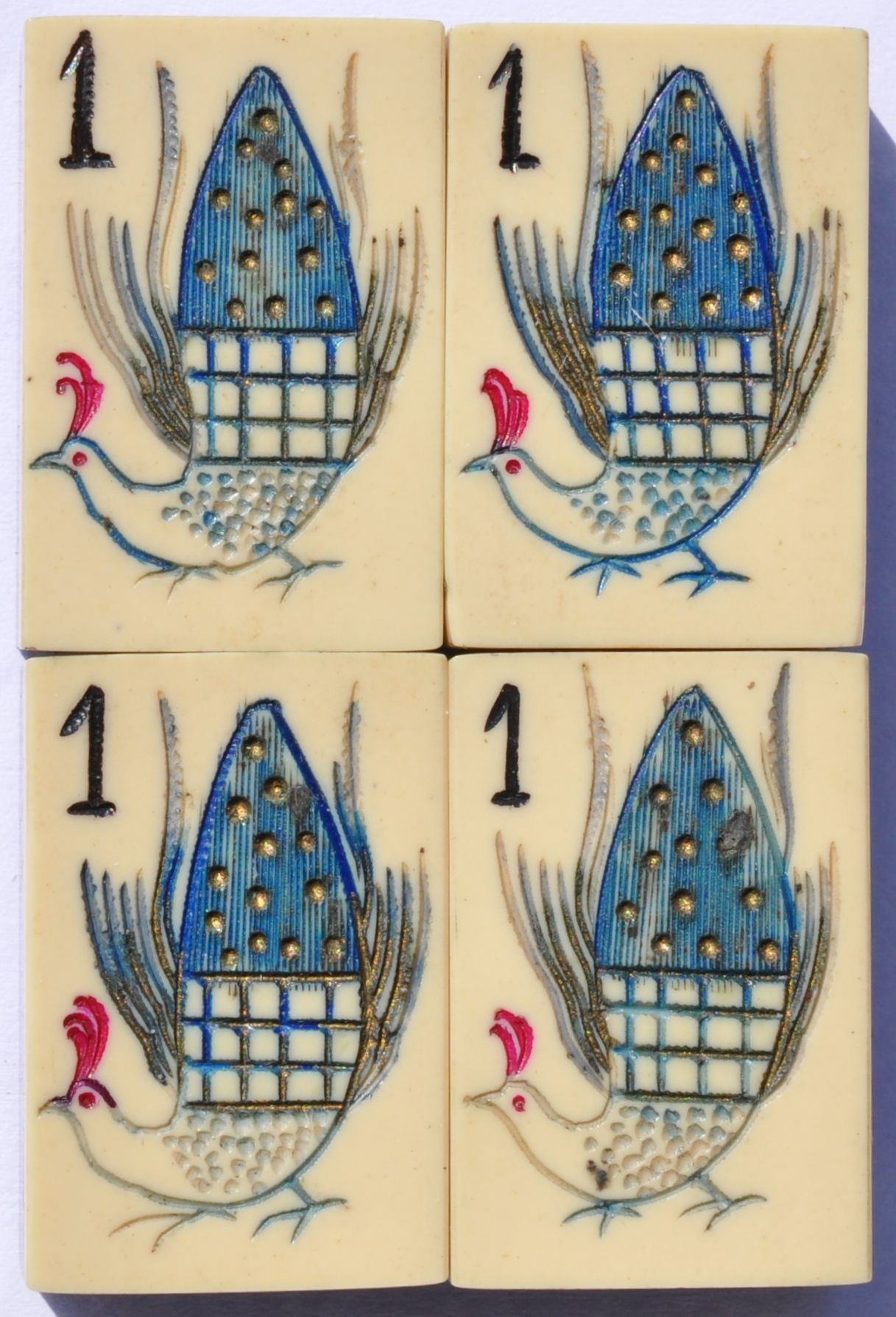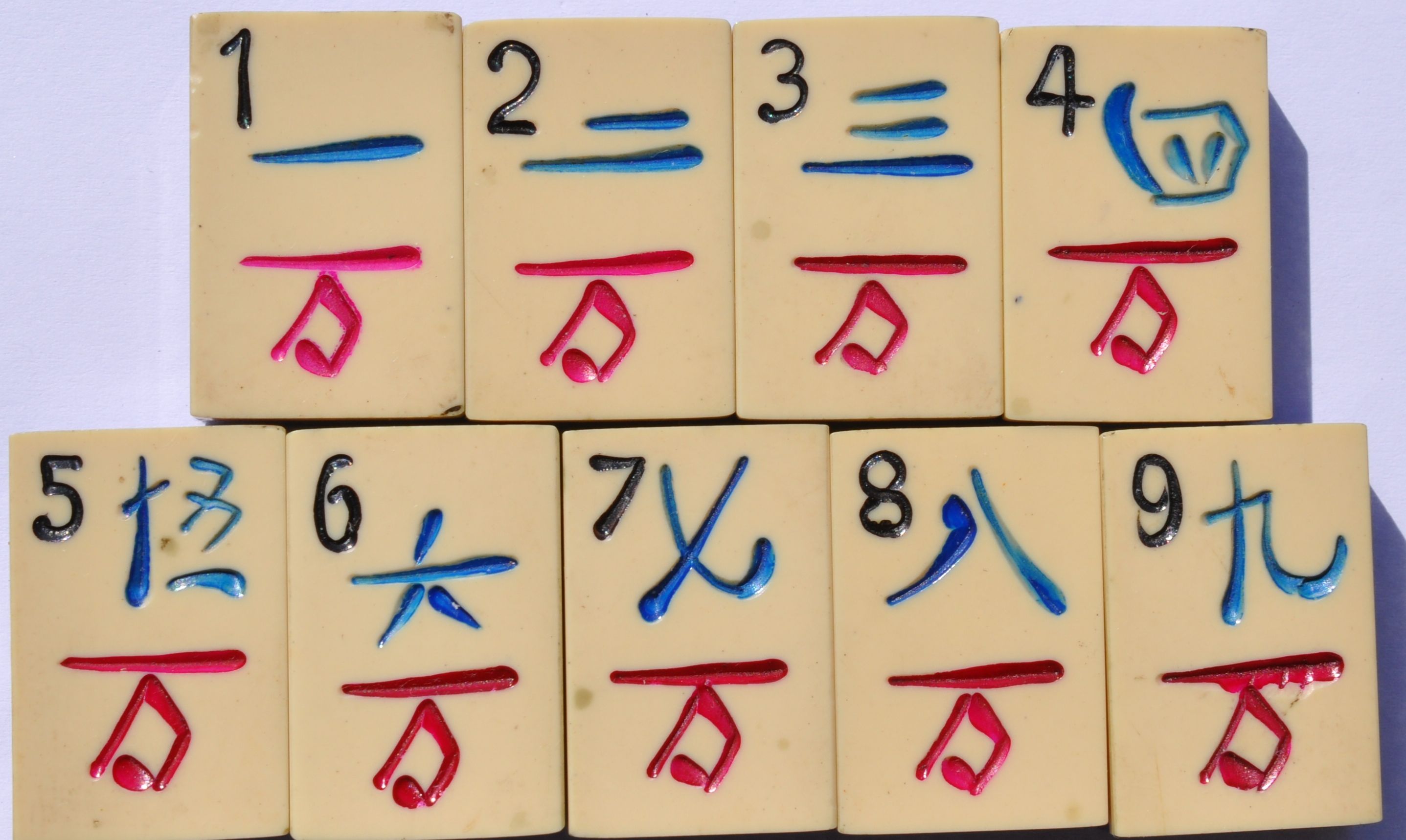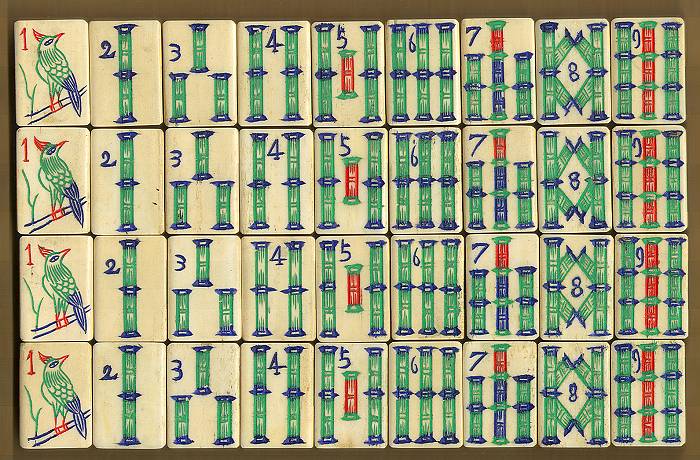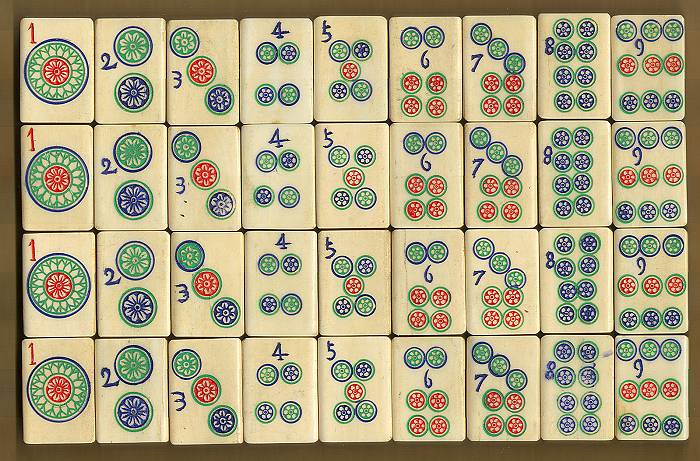
This continues the discussion of the bone and bamboo Mahjong set from yesterday.
Looking at these antique bone and bamboo Mahjong tiles one is immediately struck by how bold and vivid the colors still are. Red is used for the letters on all tiles except for the Red Dragon, where green is used for contrast. Red letters used for Honors are somewhat unusual, but red is considered by the Chinese to be a good luck color, so it is not surprising to find it here.
From Wikipedia:
"Red, corresponding with fire, symbolizes good fortune and joy. Red is found everywhere during Chinese New Year and other holidays and family gatherings. A red envelope is a monetary gift which is given in Chinese society during holiday or special occasions. The red color of the packet symbolizes good luck. Red is strictly forbidden at funerals as it is a traditionally symbolic color of happiness;[1] however, as the names of the dead were previously written in red, it may be considered offensive to use red ink for Chinese names in contexts other than official seals.
In modern China, red remains a very popular color and is affiliated with and used by the Communist government."
Something about the Green Dragon with its red F (Fa for prosperity) makes it seem almost Christmasy! The varied carving of the Western letters is fun to look at too.
You can read more from Wikipedia about the symbolism of colors in China here

The tiles on the left represent the seasons, with the East a peony, West a Chrysanthemum, and South a lotus
| From Primaltrek"Because the Buddha is often depicted as seated on a lotus, the lotus is considered a sacred Buddhist symbol (one of Eight Auspicious Symbols) representing purity and detachment from worldly cares.The lotus signifies the seventh month of the lunar calendar.The Chinese word for lotus is lianhua (莲花) or hehua (荷花). Lian is also the pronunciation of the word for continuous (连) and he is also the pronunciation for the word harmony (和) so the lotus has the hidden meaning of "continuous harmony".A lotus stem and lotus pod shown together symbolize marital harmony and sexual union.Lotus seeds (lianzi 莲 籽) have the hidden meaning of "continuous birth of children" because the lian sounds like "continuous" (连) and the zi has the same pronunciation as the word for son or child (zi 子)."
|
For more about the lotus from Primaltrek, click here
The Right tiles are also visually interesting. Note how in tile 1 the birds are quite similar to the Chinese , so the 1 almost becomes a bird. On tile 3 we see a pennant which often appears on Mahjong tiles, and a pagoda. And on 4 the small boat among the reeds: the cover of the boat and the reeds echo each other.
Thanks to Ray Heaton we have a translation of the Flowers on the right:
"They are 一統山河, Yi Tong Shan He, which means to "unify the whole country".
This could be a reference to the post Qing era where the country was united under the
nationalists, the rise and take over of the country of the communists or (and my preference)
all the way back to the Han dynasty unifying the country after the fall of the Qin."
We thank mahjongmahjong for providing these photographs. For more treasures in their collection click here



